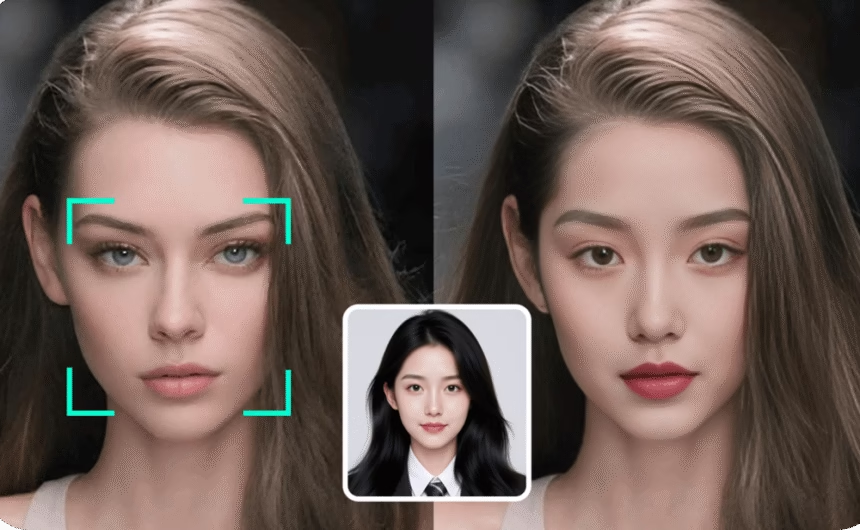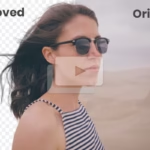Most face swaps still look rubbery in 2025. Shiny cheeks, glowing foreheads, eyes that do not lock on. The good news, a few tools now nail the small details that sell the effect.
This guide breaks down what makes a realistic AI face swap and shares tested picks that work on both photos and short videos. It keeps to safe, consent-based use for fun projects, memes, and creative work. Each pick was tested for realism, speed, ease of use, and privacy. Expect clear advice, short steps, and honest trade-offs.
If the goal is a quick laugh with friends or a clean profile swap for social, the tools below get close to real. The trick is pairing the right app with the right source media. Let’s make the swap look like it was always there.
What Makes an AI Face Swap Look Real in 2025?
Realism comes down to a few small, repeatable checks. Keep this list handy while testing.
Lighting and Colour Match: No Plastic Skin or Glow
- The face should match the neck and the room light. If the scene is warm, the face should be warm too.
- Watch for weird tints. Orange or gray skin tones are a giveaway.
- Shadows should match direction and softness. A face in shade should not sit on a body in bright sun.
- Strong tools auto-gradecolour and exposure, so you do not need to fix white balance by hand.
Quick example: If the target shot is a cool office with blue light, a swapped face should not look like it came from a sunset beach. Look at cheeks, nose highlights, and under-eye shadows to confirm the match.
Pose and Expression Alignment: Eyes, Teeth, and Mouth Matter
- Big head turns or full profile angles are hard. Small angle changes look more real.
- Eye lines should be straight. Crossed or drifting eyes break the effect.
- Teeth should look like teeth, not white piano keys. Mouth shapes need to follow the sound.
- The easiest wins come from pairing the source and target with similar poses expressions.
Try this: Match a calm smile to a calm smile. Avoid closed eyes in the source if the target is talking or laughing.
Texture and Edge Quality: Hairlines, Ears, and Skin Detail
- Zoom in. Hairlines should look like hair, not painted edges.
- Ears should keep their shape and detail. No melting edges around earrings or sideburns.
- Skin texture should show pores and light wrinkles. Over-smooth skin looks plastic.
- Better models handle glasses, flyaway hairs, and eyebrows without smearing.
If eyebrows look like smudged paint, the swap will not pass on a big screen. Crisp edges sell reality.
Video Believability: Lip Sync and Motion Blur
- Lip movement should match the audio. Open and close timing needs to feel natural.
- Motion blur should look like the camera’s blur, not a second ghost face.
- Wobble and jitter are signs of weak frame-to-frame tracking.
- Top tools blend the swap across frames so the face stays locked as the head turns.
If fast head moves leave a trail, try a shorter clip with slower movement or raise quality settings.
For a sense of what a modern free browser tool promises, review the feature list on Swapface’s site. It shows how current apps advertise speed, quality, and social-ready exports.
How This List Was Tested, Step by Step
The goal was fair, simple, and repeatable. Anyone can mimic this process at home.
Test Setup: Devices, Sample Photos, and 10-second Clips
- Devices included a recent iPhone and a mid-range Windows laptop.
- Media used: daylight portraits with neutral expressions, plus a few 10-second clips with talking, small head turns, and simple backgrounds.
- Faces covered different skin tones, hair types, and both male and female subjects.
Scoring: Realism, Speed, Ease of Use, and Privacy
- Realism: zoom tests for colour match, edges, texture, and lip sync.
- Speed: processing time, queue delays, and output resolution.
- Ease: how many steps it takes, clarity of controls, and first-try success rate.
- Privacy: data handling claims, watermarks, storage or deletion options, and export quality without hidden extras.
Safety Checks: Consent, Filters, and Data Handling
- Each tool was checked for basic content filters and clear terms.
- Upload and deletion policies were reviewed, where available.
- The tests used either owned media or content with clear rights. Readers should do the same.
Best AI Face Swap Tools That Actually Look Real (2025)
These picks worked across both photos and short videos, with a focus on realistic blends and steady results. Each summary covers strengths, trade-offs, and where it fits.
JoggAI Face Swap: Most Realistic Blends for Photos and Short Videos
Best for: creators who want clean, natural swaps without an app install.
Key strengths: high-precision facial alignment, solicolouror matching, and steady expression blending. It works in the browser on common formats and does not require a download. Short clips for TikTok, Reels, or YouTube Shorts look consistent across angles, and lip sync holds up on simple talking shots.
Trade-offs: longer clips can take more time, and results still depend on clear, front-facing source photos. The free tier focuses on basic face swapping, while pro features like custom avatars sit behind paid plans.
Pricing model: a free tier for standard swaps, with optional paid upgrades for advanced features.
Platforms: any modern browser.
Watermark or limits: may vary by export option and plan.
Privacy notes: always review the site’s current policy before uploading personal media.
Ideal uses: portraits, profile photos, quick memes, and short vertical videos where speed and realism both matter.
DeepSwap.ai: Best for Multi-Face Video Scenes and Parodies
Best for: creators who want movie-style parodies with more than one face in the frame.
Key strengths: tracks multiple faces in complex scenes and keeps the blend stable in group shots. It is a good fit for comedy clips, reaction parodies, and edits where two or more people share the screen.
Trade-offs: long clips may process more slowly, especially at high resolution. Quality depends on clean, well-lit source faces with clear eyes and mouth shapes.
Pricing model: subscription-style tiers are common for full-length exports and higher caps.
Platforms: browser-based access.
Watermark or limits: free tests may add marks or cap resolution.
Privacy notes: check account and deletion settings before large uploads.
Tip: Pick source and target clips with matching expressions. A talking source swapped onto a silent target can still look off.
For a broad overview of popular 2025 picks, including DeepSwap.ai and social-focused options, skim this guide on the best face swap tools for photos and videos in 2025.
Reface: Fast, Fun, and Surprisingly Believable for Social Posts
Best for: quick memes, GIFs, and short social clips.
Key strengths: very fast, with a huge library of short clips, GIFs, and images. Results are often believable for casual posts and stories, especially at mobile screen sizes. The app’s templates make it easy to try ideas in minutes.
Trade-offs: not aimed at long scenes or cinematic edits. Export quality is tuned for social, not big-screen projection.
Pricing model: typically freemium with paid options for higher usage and watermark removal.
Platforms: mobile apps with a large template library.
Watermark or limits: free exports may include marks or size limits.
Privacy notes: check account data settings and media retention policies in the app.
GoEnhance.ai: Simple Workflow With Consistent Quality
Best for: beginners who want reliable results with minimal setup.
Key strengths: clean interface, quick processing, and steady quality for both photos and short videos. It favours sensible defaults so users do not need to tweak many settings. Good for first-time creators or teams that need repeatable outputs.
Trade-offs: fewer advanced controls than some Pro Tools. Best results still come from clear, front-facing photos.
Pricing model: usually a mix of free tests and paid tiers for higher limits.
Platforms: browser-based.
Watermark or limits: free exports may include watermarks or resolution caps.
Privacy notes: review the site’s policy, especially for commercial use.
Worth a Look for Quick Photo Swaps
Pixlr AI Face Swap: Browser Tool With Smart Alignment
Pixlr adds a face swap option to its familiar browser editor. The swap lands quickly, and the built-in tools for brightness, colour, and sharpening make touch-ups simple. Smart alignment helps match facial features without lots of manual work.
Common use cases: YouTube thumbnails, profile photos, product lifestyle mockups, and pitch decks. The free tier is handy for fast edits, while paid options raise export quality and remove limits. Since it sits inside a photo editor, it is easy to crop, clone, and andcolour-matchh the rest of the image before exporting.
If you are comparing social-focused apps and want more options, this list of Reface alternatives for 2025 gives a useful snapshot of current tools.
Pro Tips and Safety Basics for Real-Looking Results
These steps improve quality no matter which tool is used.
Pick the Right Source and Target Media
- Use high-resolution, well-lit faces with clear eyes and teeth.
- Match the angle and expression. Neutral to neutral beats smile to frown.
- Avoid heavy makeup or face coverings in the source. Keep hair off the face when possible.
- Choose targets with clean backgrounds and even lighting.
Match Lighting, Angle, and Resolution Before You Swap
- Do quick pre-edits. Match brightness, ancolouror temperature so skin tones sit right.
- so thatat so faces are similar size. Align eye lines where possible.
- Keep both files at a similar resolution. Upscaling after the swap can blur the texture.
Example: If the target is a cool indoor shot, add a little blue tone to the source to avoid the orange cast that screams fake.
Use the Right Settings, Then Export at High Quality
- If the tool offers quality sliders, start high. Enable face refinement or detail preservation.
- Turn on features that stabilize faces across frames in video.
- Export at native resolution, and avoid heavy compression that erases texture.
- Check for watermarks or hidden quality caps in free tiers.
Get Consent, Add Labels, and Share Responsibly
- Get permission from anyone featured. Do not use stolen or private media.
- Avoid harmful or misleading uses. Add a label or watermark for parody.
- Review platform rules. Local laws may apply.
- Delete uploads from the tool if you are done and privacy matters.
For quick community insights and tips, user discussions like this Reddit thread on tested AI face swap tools can help set expectations before a big project.
Conclusion
Realism comes from the tool and the setup. Match light and angle, pick clean source media, and choose software that respects texture and motion. Quick picks: JoggAI for the most realistic photos and short videos, DeepSwap.ai for multi-face scenes, Reface for fast social swaps, GoEnhance.ai for steady results without fuss, and Pixlr AI Face Swap for fast browser edits. Keep using ethical, and protect privacy. Try one pick today, run a short clip, and compare results with the checklist above.















